The well-preserved mummies owe their state to a continuous flow of dry, cool air. In 1994, archaeologists made a remarkable discovery, uncovering several coffins containing exceptionally well-preserved corpses beneath a church named Dominican in the town of Vác, Pest County, Hungary. Among them, two mummies drew the attention of archaeologists – those of a 38-year-old mother named Veronica Skripetz and her 1-year-old son, Johannes Orlovits.
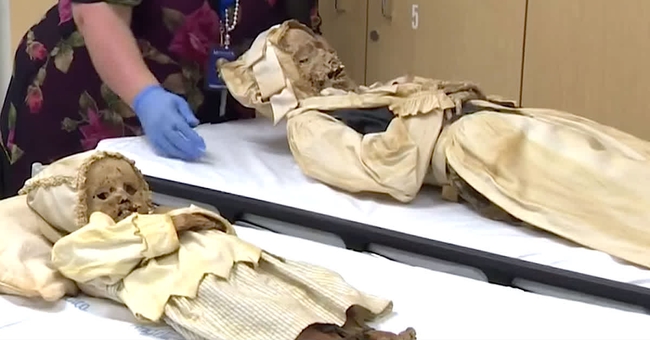
As renovation work took place on the Dominican church, workers inadvertently stumbled upon a crypt containing over 250 bodies underground, all dating back approximately 300 years.
Fast forward to April 2016, doctors at the Global Medical Center in Orange County, Santa Ana, California (USA), conducted a post-mortem examination on the mummies of the mother and son to understand life during that time and the reasons behind their deaths.
The painful truth about these deaths
“Now, we can find answers about their lives and explain why many children died in infancy. They had no antibiotics and vaccines. The mortality rate in children was very high,” said Ildiko Szikossy, an anthropologist from Hungary.
This implies that many children had to endure pain and succumb to death due to diseases without antibiotics or vaccines. Young Johannes Orlovits was one of them.
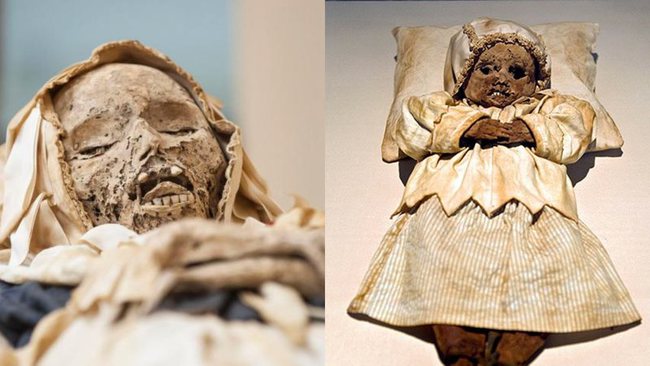
After transporting the mummies of the mother and son over a distance of more than 9,000 km, scientists utilized modern computed tomography (CT) scanning techniques for analysis.
“The mother appears almost intact from top to bottom, while the child has some small broken bone fragments. We really didn’t know what we would find. It’s like unveiling a curtain hiding surprises. The mother seems to have died from tuberculosis, but the CT results will reveal more details,” Dr. Jim Sutherland, a CT research expert, shared.
Surprising results
After a month of study, scientists concluded that Veronica Skripetz died of tuberculosis in 1808. Her son, Johannes Orlovits, succumbed to malnutrition at the age of 1. Veronica Skripetz had three children, and none of them lived past 2 years old.
The mummies of the mother and son were exhibited at the Bowers Museum until September 5, 2016, as part of the ‘Mummies of the World’ program. It is unclear where they have been moved since then.
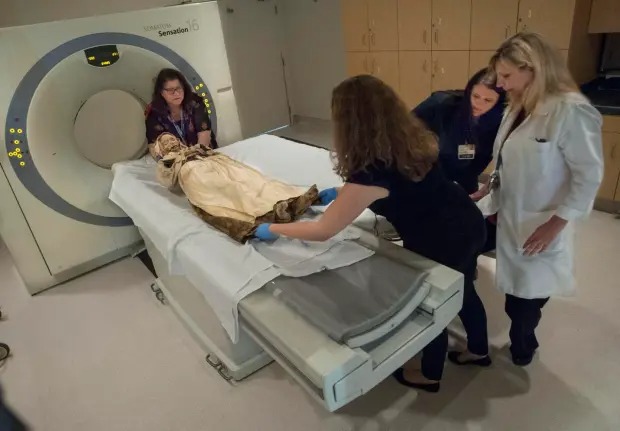
In 2010, CT scans were performed on the mummy of a man named Michael Orlovits, the first husband of Veronica Skripetz, who died in 1806. His mummy was also part of an exhibition at the Bowers Museum.
The three mummies are part of more than 250 bodies found in a secret crypt beneath the Dominican Church in the town of Vác, Hungary. Those discovered were buried between the 1700s and 1800s.

For a long time, the crypt remained hidden and forgotten. However, in 1994, repair work at the church helped uncover the bodies. The mummies were well-preserved due to a continuous flow of dry, cool air.
“When they opened the coffins, everyone was amazed that the hair, skin, and clothes of the corpses were still intact,” Dr. Linda Sutherland, who led the research, said. “Usually, when you open a coffin, you only see bones, and the soft tissues are completely decomposed.”
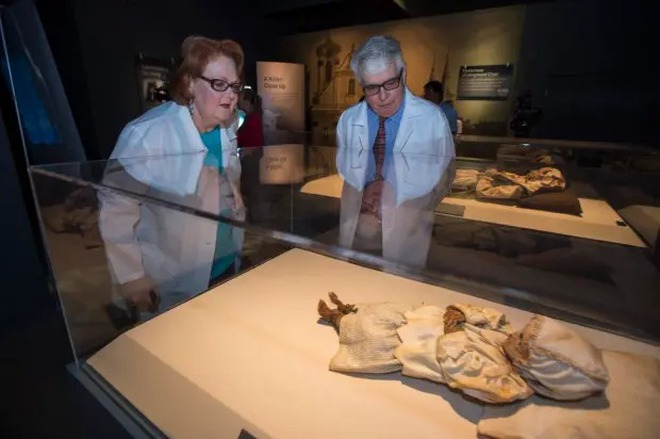
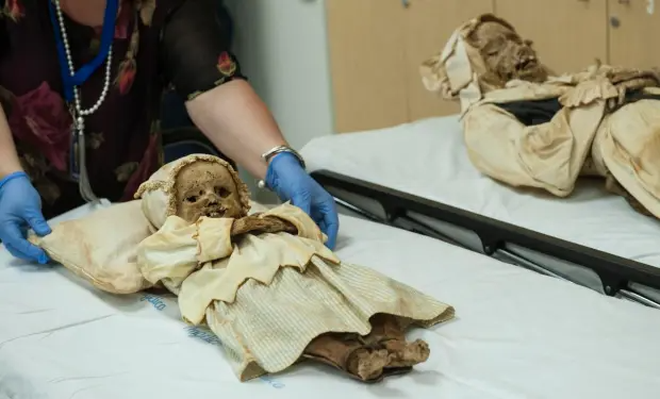
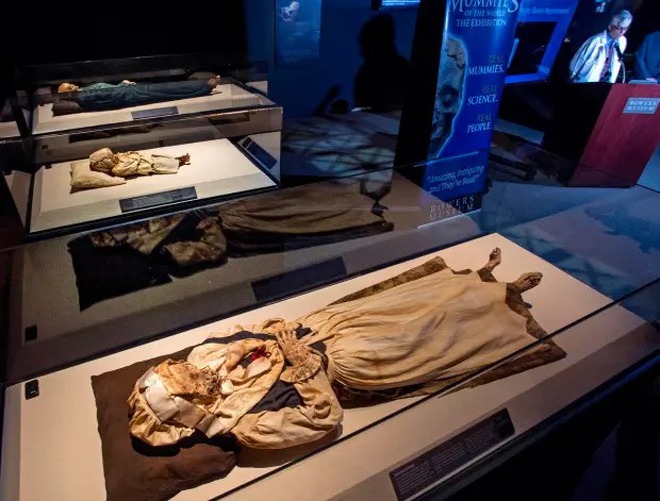

The church records and inscriptions on the coffins made it easy for researchers to determine names, birth and death dates, marital status, and even the occupations of the mummies.
After the discovery of the mummies, researchers in Hungary analyzed Veronica Skripetz’s lung tissue and concluded that she had tuberculosis.
The CT scans confirmed this, revealing scars in Veronica’s lungs. It also showed that Veronica was very thin, suggesting she may have been ill for some time before her death. She passed away at the age of 38, just two years after the death of Michael Orlovits and one year after her second marriage.
Johannes Orlovits, the baby born in 1800 and deceased a year later, appeared well-nourished in the CT scans, with chubby legs and a plump body.
Dr. Linda Sutherland stated, “The baby seems not to have any chronic illnesses or broken bones. Therefore, the baby may have died suddenly. The baby’s intestines are relatively clean, without any traces of bacteria that aid in food digestion. Dysentery could be a culprit. Without modern treatment methods such as intravenous rehydration, dysentery could cause death during that time.”
Source: Ocregister, Reuters




